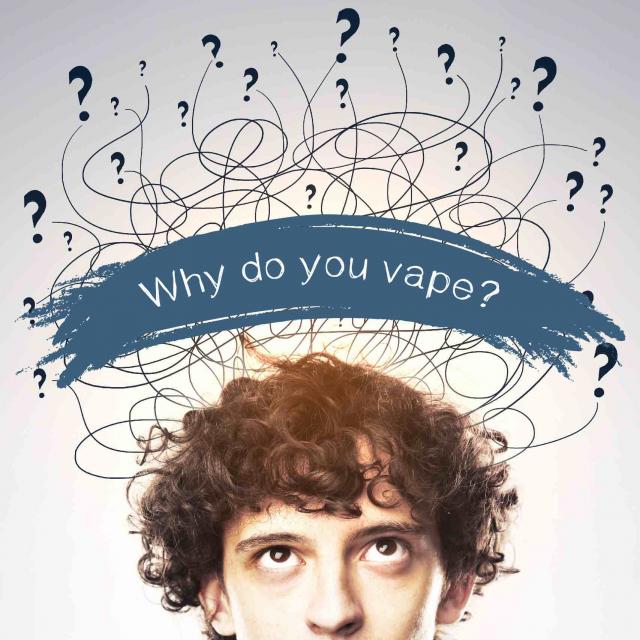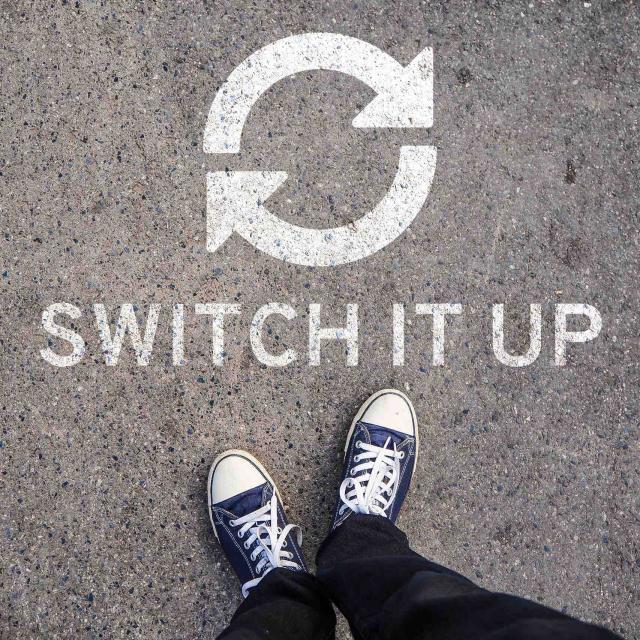Triggers are the things that make you want to vape, like dealing with a stressful situation or seeing someone else vape. Understanding your triggers and learning how to deal with them will help you quit vaping for good.

Know Your Triggers
When you first started vaping, it probably wasn’t a big part of your life. But over time, you’ve built up patterns and routines around vaping. When you quit vaping, it may seem like reminders of vaping are all around you. These reminders can make it hard to stay vape-free.
You may not be able to avoid all the things that remind you of vaping—especially if you vape during many different activities or frequently throughout the day. But knowing your triggers and having a plan will help you quit vaping for good. Create a quit plan to help you identify your triggers and choose strategies to stay in control as you quit vaping. Here are some common triggers and strategies for how to deal with them.
Social Triggers
Social situations or events— even scrolling through social media—can trigger the desire to vape. For example, you may crave your vape when you:
- See someone else use a vape
- Smell aerosol from a vape (sometimes called vapor)
- Hang out with friends who vape or use another tobacco product
- Go to a party or other social event
- Study with friends
- Are offered a vape or a new flavor
- See vapes on social media
How to Deal With Social Triggers
Many people who have quit vaping find it helpful to make some changes to their social lives, at least for a little while. Once you’ve decided to quit, you may want to:
- Plan ahead. Think about how you will handle social situations where others are vaping. Practice what you will say if somebody offers you a vape. Keep it simple and direct – “no thanks, I quit.”
- Avoid places where people vape. Going to parties or hanging out at a friend’s house where you know people will be vaping may make it harder to stay quit. Explain to your friends that you’re not avoiding them, but that you are avoiding situations that might make you want to vape.
- Ask others not to vape around you. If you are around people using vapes, ask them not to offer you to use theirs.
- Take a break from social media. Unfollow social media accounts with images and videos of vape tricks. Unsubscribe to emails that link to places that sell vapes, e-liquids, or pods.
Over time, it will get easier to handle social situations that make you want to vape. Try to stick with it and continue to ask friends and family for their support. You can quit vaping and still have a social life.
- Lean on supportive people. Tell your family and/or friends that you are quitting and ask for their help. Spend time with people who make you feel good about yourself and want you to achieve your vape-free goal.
- Find other ways to connect and have fun. Remember that vaping doesn’t define you or your friendships. You and your friends have plenty of things in common besides vaping. It’s helpful to remind yourself of what those things are.
- Be ready for change. If you want to quit and your friends don’t, it could change some of your relationships. Being ready for those changes—some good, some bad—can help you when you quit vaping.
Triggers in Your Everyday Life
Many people connect vaping with certain activities or parts of their daily routine. Plan ahead with ways to stay vape-free when you’re:
- Texting or playing on your phone
- Going in the school bathroom
- Seeing ads for vapes throughout the day
- Studying or doing homework
- Watching TV or playing video games
- Walking or driving
How to Deal With Triggers in Your Everyday Life
Breaking the links between your daily routine and vaping can help you stay vape-free. Here are some tips:
- Throw out your vapes, chargers, and pods. Getting rid of daily reminders of vaping will help you resist temptations and make it harder to slip back into vaping.
- Find a replacement behavior. Do something else with your hands/mouth instead of using your vape, like chewing sugar-free gum, eating sugar-free candy and mints, doodling, or playing a game on your phone.
- Change your daily routine. Switching things up can help you avoid triggers associated with your old routine. Take a different route to school, change where you eat lunch and/or who you eat with, or sign up for a new after-school activity.
- Stay busy. Go for a walk, study, exercise, or listen to a podcast. Try something new or do something you already love. Staying busy can take your mind off vaping.
- Be careful of downtime. You might be used to vaping during breaks or in between classes. Use this time to do something else—get a head start on your homework, read a book, or check sports stats.
If you smoke cigarettes or use other tobacco products besides vapes, now is a good time to quit those too. These products contain nicotine and are harmful to your health. There are free tools to help you quit. Download our quitSTART app, sign up for SmokefreeTXT, or chat with an expert online using the National Cancer Institute’s LiveHelp service.
Emotional Triggers
Emotions can be powerful triggers for vaping. It’s common to want to vape to escape a bad mood or to make a good mood better.
For example, you may notice an urge to vape when you’re having negative emotions, like:
- Stressed or anxious
- Lonely
- Bored
- Sad
- Frustrated or upset after an argument
Positive emotions can also trigger the urge to vape, like when you’re feeling:
- Happy
- Excited
- Relieved
How to Deal With Emotional Triggers
You can learn to manage your feelings without reaching for your vape. Try these tips:
- Take a break. Taking a “time out” from an upsetting or stressful situation can help you calm down. Go for a walk, listen to music, or find a quiet spot and take some slow, deep breaths.
- Move around. Getting your body moving is a great way to handle emotions—both positive and negative. Dance, shoot some hoops, or find a workout class or video that gets you moving.
- Care for yourself. Eating a balanced diet, drinking lots of water, and getting enough sleep will help keep your mind and body feeling good.
- Reward yourself. Even small things like watching a clip of your favorite show, listening to a favorite song or podcast, or giving yourself an extra 30 minutes of doing whatever makes you happy can boost your mood. This is also a great way to celebrate when you’re feeling good!
- Reach out to others. Whether you are feeling good or bad, turn to the people who care about you. Your friends, parents, doctor, or other trusted adults can help you celebrate successes and bring you up when you’re feeling down. You can also get free, personalized support from a tobacco cessation expert by calling 1-800-QUIT-NOW or 1-877-44U-QUIT, or chat with an expert online using NCI’s LiveHelp service.








